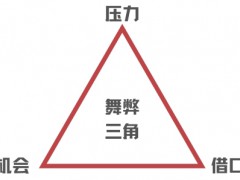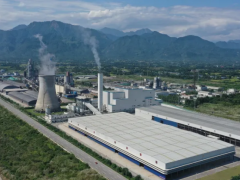据油价网2021年7月25日报道,全球石油和天然气行业正面临着越来越大的压力,要求他们清理其行动,减少运营中的排放,即所谓的范围 1和范围2排放。
包括荷兰皇家壳牌公司、英国石油公司、埃尼公司、雷普索尔公司和道达尔能源公司在内的许多欧洲最大的石油公司都制定了自己的目标,即削减上游业务的碳强度,他们承诺到2050年前或更早时候成为净零排放企业。
来自投资者和股东的压力也在增加,包括石油行业要求减少所谓的范围 3排放——即使用其产品产生的排放。
伍德麦肯兹说,低碳电力将是减少排放的关键,该公司估计,约三分之二的排放来自电力消费——生产、加工和液化。
根据伍德麦肯兹排放基准工具的数据,在2021年至2025年期间,碳强度最高的地区将是大洋洲,这主要是由于液化产生的大量排放。 其次是非洲,这也是因为在上游作业中伴生气放空燃烧占了很大份额。再其次是亚洲,亚洲的产量和液化排放较高,而北美的产量和甲烷损失占了碳强度的很大一部分。
伍德麦肯兹北海上游油气首席分析师Jessica Brewer表示:“但我们需要克服技术、物流和商业方面的挑战。”
例如,伍德麦肯兹6月份曾表示,由于缺乏解决伴生气放空燃烧问题的基础设施,非洲拥有一些污染最严重的资产。
伍德麦肯兹在一份报告中称:“减少排放并考虑新能源多元化确实是不可避免的。”
由于投资者希望看到减排方面的切实努力,国际石油巨头应该努力解决非洲的问题,非洲时下正在计划新的液化天然气(LNG)项目。
石油行业已经提出了削减运营排放的方法,不仅是在非洲,尤其是在股东和法院对大型石油公司的经营许可证发出了迄今最严厉的警告之后。
石油公司已经开始解决投资者对排放的担忧。 一些公司正在利用可再生能源加速油田的电气化,而另一些公司(实际上大多数公司)正在研究碳捕获、储存和利用(CCSU)技术,以期在作业过程中去除二氧化碳。
例如,挪威能源巨头Equinor正在电气化其作业,用可再生能源取代主要来自燃气轮机的化石能源供应。
Equinor表示:“北海电气化是实现我们未来几十年气候雄心的主要措施之一。”
美国石油巨头埃克森美孚公司和雪佛龙公司不像欧洲石油巨头那样投资太阳能或风能,他们押注于碳捕获和储存(CCS)。 许多欧洲石油公司也希望减少碳足迹,帮助整个产业群脱碳。
今年早些时候,埃克森美孚公司在美国创建了一个新业务——埃克森美孚低碳解决方案,将其低碳技术组合商业化,首先重点是CCS。 雪佛龙公司还将CCS作为未来几十年投资的一个领域。
由于各领域越来越多的公司承诺在未来二三十年实现净零排放,最大的石油公司认为CCS是帮助碳密集型行业减少排放的方法之一。
石油巨头们已经开始在欧洲部分地区开展几个大型CCS项目,旨在实现工业群的脱碳。
即使是在油砂产地——世界上最密集的原油资源之一——加拿大,最大的生产商也宣布了一项净零合作计划,以实现油砂作业到2050年的净零排放。 这个计划包括运营加拿大油砂生产约90%的公司:加拿大自然资源公司、塞诺佛斯能源公司、帝国能源公司、MEG能源公司和森科尔能源公司。
加拿大油砂集团表示,这个计划雄心勃勃,“将需要行业和政府的大量投资,以推进新技术和新兴技术的研究和开发。”
来自加拿大油砂集团的警告对所有正在出现的能够节约能源和减少上游作业排放的技术都是有效的——这些技术需要大量投资,而不仅仅来自石油巨头。
李峻 编译自 油价网
原文如下:
Big Oil Faces Mounting Pressure To Cut Upstream Emissions
Pressure is mounting on the oil and gas sector to clean up its act and reduce emissions from operations, the so-called Scope 1 and Scope 2 emissions.
Many of Europe’s largest oil corporations, including Shell, BP, Eni, Repsol, and Total, have imposed their own targets to cut carbon intensity from their upstream operations as they have pledged to become net-zero emission businesses by 2050 or sooner.
The pressure from investors and shareholders is also growing, including on the oil industry to reduce the so-called Scope 3 emissions—those emissions generated by the use of their products.
Low-carbon power would be a key to cutting emissions, says Wood Mackenzie, which estimates that around two-thirds of emissions come from power consumption - production, processing, and liquefaction.
Between 2021 and 2025, the region with the highest carbon intensity will be Oceania, mostly due to the large emissions from liquefaction, according to the Wood Mackenzie Emissions Benchmarking Tool. Africa comes next, also because of the large share of flaring in upstream operations, followed by Asia with high production and liquefaction emissions, and North America, where production and methane losses account for much of the carbon intensity.
“But technical, logistical and commercial challenges need to be overcome,”
Jessica Brewer, Principal Analyst, North Sea Upstream Oil and Gas at WoodMac, notes.
Africa, for example, hosts some of the most polluting assets because of a lack of infrastructure to solve the gas flaring problem, Wood Mackenzie said last month.
“Reducing emissions and considering new energy diversification is really unavoidable,” WoodMac said in a report.
As investors want proof of solid efforts for emission reduction, international oil majors should work to address the problem in Africa, where new liquefied natural gas (LNG) projects are being planned.
The oil industry has proposed ways to slash emissions from operations, not only in Africa, especially after shareholders and courts delivered a warning, the starkest yet, about Big Oil’s license to operate.
Oil firms have started to address investor concerns about emissions. Some are accelerating the electrification of oilfields with renewable sources of energy, others—most actually—are looking at carbon capture, storage, and utilization (CCSU) technologies to remove the carbon dioxide during operations.
Norway’s Equinor, for example, is electrifying operations, replacing a fossil-based power supply, mostly from gas turbines, with renewable energy.
“Electrification in the North Sea is one of the main measures to reach our climate ambitions for the next decades,” the Norwegian energy giant says.
U.S. supermajors Exxon and Chevron, who—unlike Europe’s giants are not investing in solar or wind energy—are betting on carbon capture and storage. So are many European oil firms in hopes of reducing their carbon footprint and helping whole industrial clusters to decarbonize.
In the United States, Exxon created earlier this year a new business, ExxonMobil Low Carbon Solutions, to commercialize its low-carbon technology portfolio, focusing first on CCS. Chevron also bets on CCS as one area in which it would invest in the coming decades.
The biggest oil firms believe that CCS is one of the ways to help carbon-intensive industries to reduce their emissions, as a growing number of companies in various sectors are committing to net-zero operations within the next two to three decades.
Oil majors are already working on several large-scale CCS projects aimed at decarbonizing industrial clusters in parts of Europe.
Even in Canada, home to the oil sands—one of the most emission-intensive crude resources in the world—the biggest producers announced a net-zero collaboration initiative to achieve net-zero emissions from oil sands operations by 2050. The initiative includes companies that operate some 90 percent of Canada’s oil sands production: Canadian Natural Resources, Cenovus Energy, Imperial, MEG Energy, and Suncor Energy.
The initiative is ambitious and “will require significant investment on the part of both industry and government to advance the research and development of new and emerging technologies,” the group said.
The warning from the Canadian groups is valid for all technologies emerging to save the day and reduce emissions from upstream operations—those technologies need a lot of investment, and not just from Big Oil.
免责声明:本网转载自其它媒体的文章,目的在于弘扬石化精神,传递更多石化信息,并不代表本网赞同其观点和对其真实性负责,在此我们谨向原作者和原媒体致以敬意。如果您认为本站文章侵犯了您的版权,请与我们联系,我们将第一时间删除。







